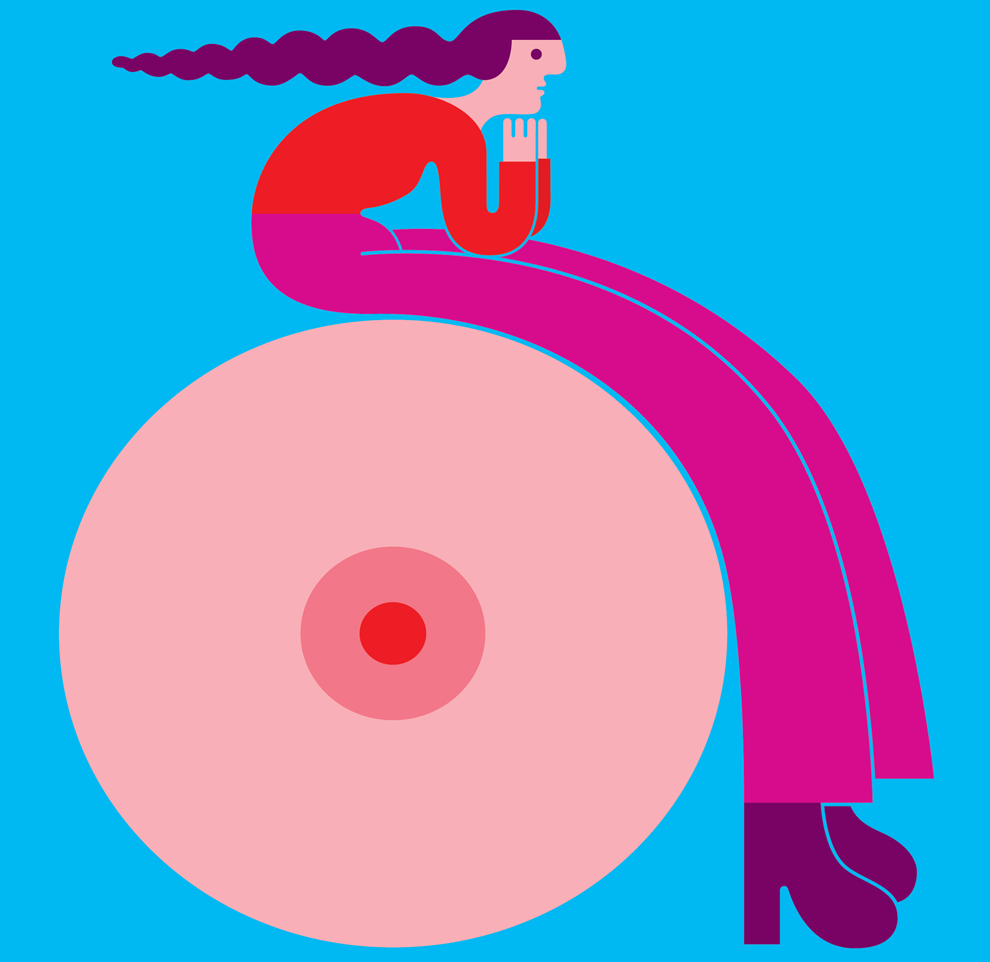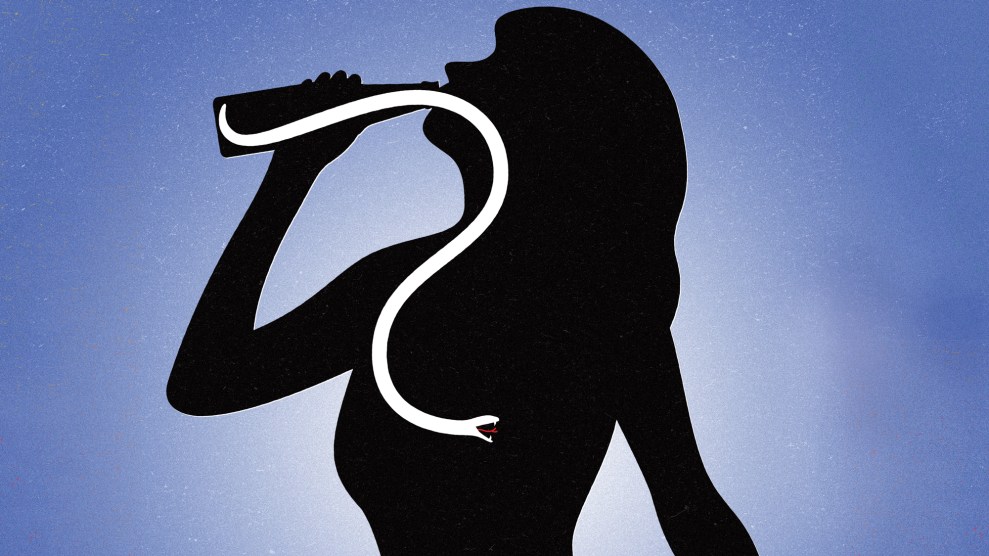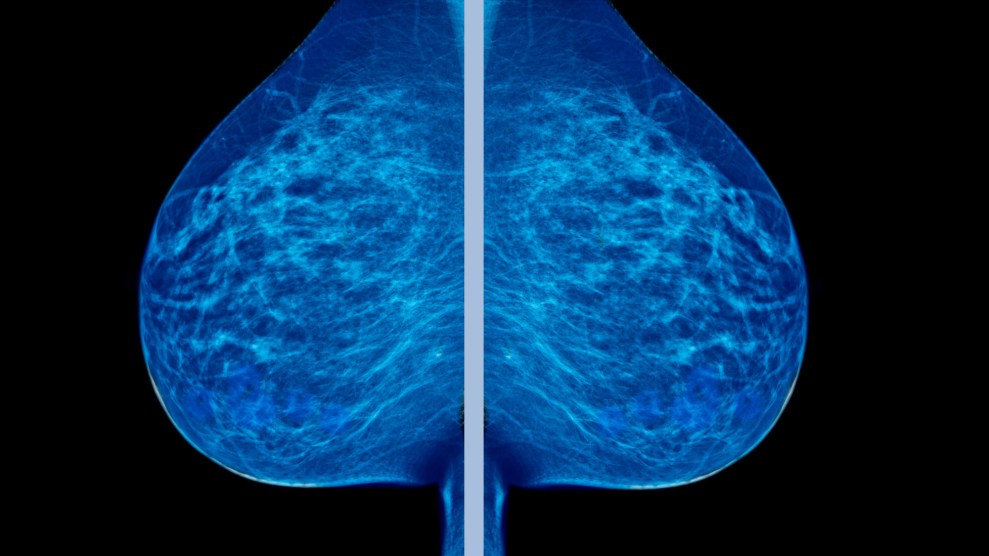
At least once a year for seven years after I turned 40, a doctor would invariably tell me I needed a mammogram. Every year I said no, invoking the recommendations from the US Preventive Services Task Force, which say mammograms before age 50 aren’t usually necessary. Then in March 2017, when I was 47, I found a tumor. Sheepishly, I called my OB-GYN and asked for one of those referrals I’d been tossing in the trash. But now that I had something to justify a mammogram, getting one turned out to be a lot harder than I imagined.
My doctor’s office insisted I first come in for an exam. Once I got a referral, I called the Washington, DC, area’s largest radiology facility to book a diagnostic mammogram. The woman on the phone informed me that the earliest appointment was more than three weeks out. I told her I needed to come sooner: I could be dying! Check back in a week, she said; there might be a cancellation. The wait was excruciating. I was sure every second of delay meant cancer was creeping into my brain. Days later, a sympathetic scheduler found me an appointment at the end of the week. A biopsy later confirmed stage 2 lobular cancer.
After my diagnosis, I had a brief, irrational moment when I thought getting cancer was my comeuppance for refusing all those annual mammograms. The side-eyes from doctors checking out my rather large tumor suggested some believed that, too. But there’s evidence that more mammograms might not have helped me. What’s more, if I had opted for them earlier, I might have made it harder for women who really needed one to get it.
To understand why, it’s important to know the history of mammogram recommendations. For years, experts urged women 40 and older to get mammograms every year—the idea was that early cancer detection saves lives. But then science showed that mammograms for younger women aren’t very accurate and lead to lots of false positive results and unnecessary intervention. All that overtreatment is expensive—one study puts the cost at $4 billion a year. So in 2009, the task force changed its guidelines to recommend that most women start the exams at age 50 and get them only every two years. I’m a case in point: Earlier, more frequent mammograms would probably not have changed my prognosis; my tumor, nearly three centimeters and big enough to feel, didn’t even show up on the mammogram I eventually did have—that took an ultrasound. That’s not unusual. Screening mammograms miss about 20 percent of all cancers.
Yet women’s behavior—and their doctors’—hasn’t changed much since 2009. As my physician once explained, “Sometimes we find things.” According to the Centers for Disease Control and Prevention, in 2015, about 64 percent of women older than 40 reported having a mammogram within the previous two years. In 2016, an analysis by the Breast Cancer Surveillance Consortium showed that nearly 30 percent of women who had mammograms between 2007 and 2013 were under the age of 50. All that testing could affect the ability of women who do have a tumor to get diagnostic mammograms.
“When you have finite capacity and you’re using it for stuff that people don’t need, it means it’s not available for people who do need it, especially if they need it fast,” says Shannon Brownlee, senior vice president of the Lown Institute, a think tank studying health care overuse. There aren’t good figures on how big a problem this is, she says, because the notion that overscreening has opportunity costs has “not really penetrated the research world.”
But there are indicators the issue could be remedied simply by urging doctors to follow the guidelines. In 2007, epidemiologist Kristi Allgood was working on a breast cancer task force in Chicago, where black women were about twice as likely to die of the disease as white women. One of the goals was to get more screening mammograms for high-risk black women, which was a challenge, since many of Chicago’s facilities had long wait times—up to 10 months at one facility. The task force’s data showed that the city had plenty of capacity, provided that women older than 40 were only screened every two years. But if every woman over that age got a mammogram annually, Chicago would need an additional 85,000 slots.
There is also a psychic cost to forcing people with a potentially fatal illness to take a number. In one study, researchers found that more than 80 percent of women with breast cancer show signs of post-traumatic stress disorder. The rates of PTSD symptoms are actually higher before women begin treatment, which makes perfect sense to me. Waiting for appointments and dealing with the uncertainty around a cancer diagnosis are utterly panic-inducing.
If I had to do everything over, I still wouldn’t get those mammograms starting when I turned 40. By avoiding yearly screening, I probably earned several blissful years free from worrying that every ache or pain might be metastatic cancer, the way I do now. And I’d like to think my absence in the queue cleared the deck for a woman who needed the peace of mind more than I did.

















